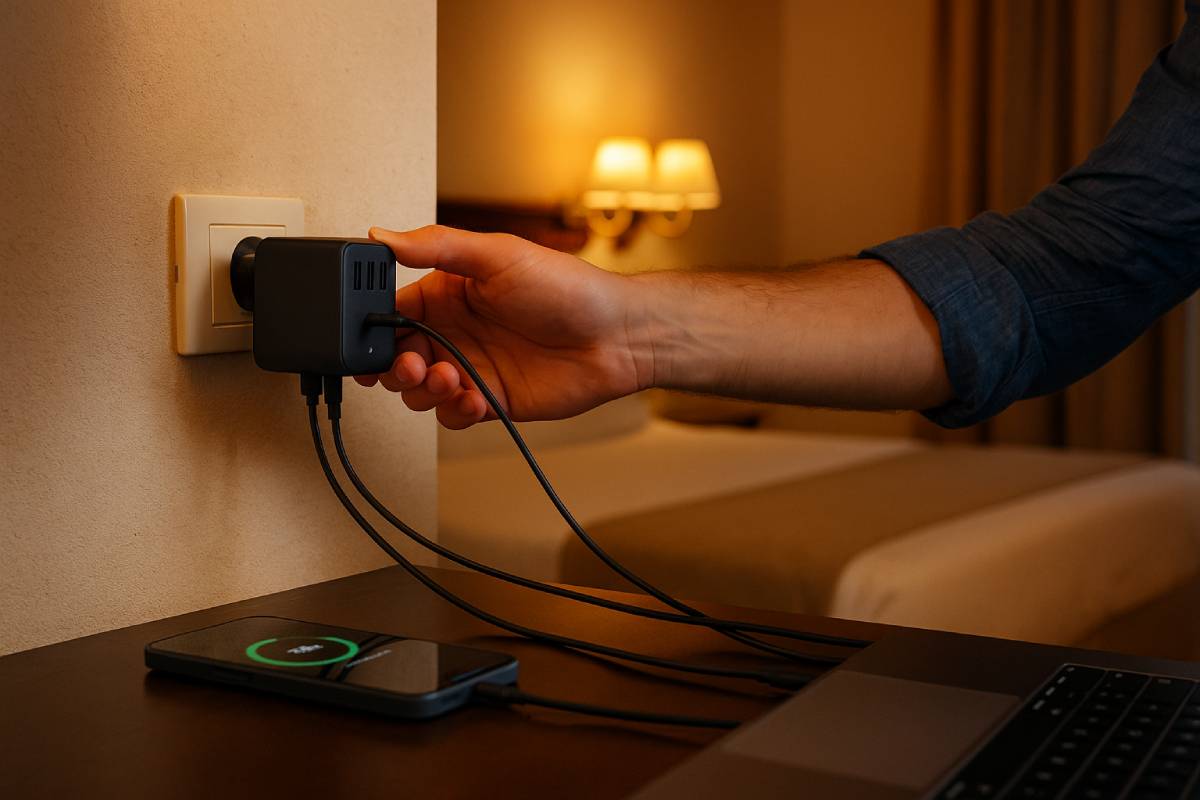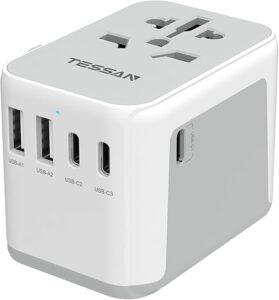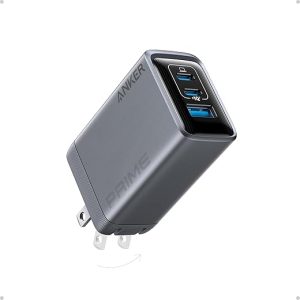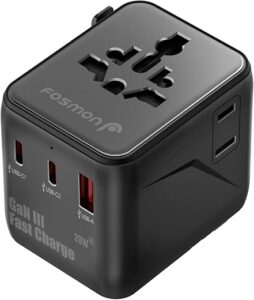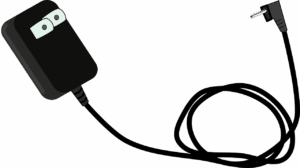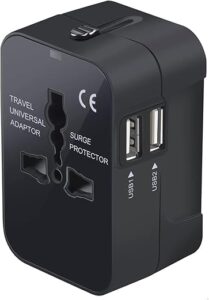From fumbling with separate chargers in tight hotel outlets to wrestling bulky power bricks that crowd your carry-on, travelers juggling smartphones, tablets, and laptops abroad often find themselves haunted by low-battery anxiety and tangled cables.
In this post, we’ll explore whether integrating USB-A and USB-C ports directly into travel adapters truly justifies the added bulk and premium price, helping you decide if the all-in-one convenience is worth the trade-offs for today’s fast-paced globetrotting lifestyle.
What Is a Travel Adapter with Built-In USB Ports?
Travel adapters have long enabled globetrotters to use their devices abroad by adapting plug shapes to local outlets without altering voltage. As smartphones, tablets, and USB-powered gadgets proliferated, manufacturers began embedding USB-A and USB-C ports directly into travel adapters to streamline charging and reduce cable clutter.
Meanwhile, regulatory momentum—most notably the EU’s Common Charger Directive—will require, by December 28, 2024, that all mobile phones, tablets, and cameras sold in member states feature a USB-C port, extending to laptops by April 28, 2026.
Definition of a Travel Adapter
A travel adapter is a compact device that allows the plugs of your electronic devices to physically fit into differently designed outlet sockets around the world without converting voltage. It simply adapts the pin configuration of your plug to match the local standard—Type A, B, C, G, I, etc.—ensuring a secure connection for charging or using small appliances.
Note that travel adapters do not alter voltage or frequency; voltage conversion requires a separate transformer or converter.
Evolution to USB-Enabled Adapters
Originally, travel adapters solely provided plug shape compatibility. With the rise of USB-powered devices, innovators like Enerlites introduced adapters integrating USB ports alongside AC outlets, enabling direct charging without extra bricks or cables.
Brands such as Skross further advanced this trend by incorporating Power Delivery (PD) technology—leveraging GaN semiconductors—to deliver faster, safer charging at higher wattages in a compact form factor.
Regulatory Push for USB-C Standard
The EU’s Common Charger Directive (Directive 2022/2380) mandates USB-C ports on electronic devices to reduce e-waste and simplify the consumer experience. Key dates include:
| Device Category | USB-C Mandate Effective Date |
|---|---|
| Mobile phones, tablets, cameras | Mobile phones, tablets, and cameras |
| Laptops | April 28, 2026 |
The directive not only standardizes connectors but also harmonizes fast-charging requirements and promotes unbundling chargers from device sales.
This regulatory shift accelerates the transition to USB-enabled travel adapters and underscores the growing importance of integrating USB-C for universal compatibility.
Benefits of Built-In USB Ports
Travel adapters with built-in USB-A and USB-C ports centralize charging for smartphones, tablets, and even laptops, meaning you can ditch multiple bricks and tangled cables in favor of one compact device.
Thanks to GaN (gallium nitride) technology, many of these all-in-one adapters now deliver up to 70 W of Power Delivery with integrated surge protection, so you get fast, safe charging in a heat-efficient package.
And when you compare the combined weight of a standalone phone charger + cable (~170 g) and a MacBook Pro adapter (~296 g) against a single 250 g multi-port GaN adapter, you’re cutting your charger load in half, freeing up space and lightening your luggage.
All-in-One Convenience
Built-in USB-A and USB-C ports let you charge up to six devices—phones, tablets, cameras, earbuds—simultaneously from one wall socket, eliminating the need to juggle multiple chargers or hunt for free outlets. No more swapping cables or waiting for one gadget to finish before plugging in another.
Faster Charging via PD
GaN-enabled adapters like the Baseus EnerCore CG11 deliver up to 70 W Power Delivery, enough to fast-charge a MacBook Pro 14″ to 40 % in 30 minutes, while built-in surge protection safeguards your gear. GaN semiconductors also run cooler and more efficiently than silicon, so you get high power in a smaller, lightweight form factor.
Space & Weight Savings vs. Multiple Chargers
Instead of packing a separate phone charger (≈ 90 g) plus cable (≈ 80 g) and a laptop adapter (≈ 296 g), you carry one 250 g USB-enabled travel adapter, cutting your charging kit weight by over 200 g and de-cluttering your luggage.
| Configuration | Weight |
|---|---|
| Single 6-in-1 GaN Travel Adapter (Baseus CG11) | 250 g |
| Phone Charger + Cable | ~170 g |
| MacBook Pro 85 W Adapter | 296 g |
| Total Separate Chargers | 466 g |
Beyond weight, the all-in-one design also saves space and reduces clutter, fitting neatly into a pocket or small pouch without extra power strips or hubs.
Drawbacks and Trade-Offs
Here’s a quick overview of the main trade-offs with USB-enabled travel adapters: they tend to be heavier and bulkier than single-purpose chargers—multi-port GaN adapters average 118 g to 188 g versus 38 g for a typical single-port model.
Heat management can still be a concern even with GaN technology; high-wattage outputs often generate noticeable warmth, so certifications like UL, CE, and FCC are crucial for safety.
Finally, built-in-USB adapters carry a premium price tag—typically $35–$70 compared to $12–$15 for basic single-port chargers.
Increased Size & Weight
Even with GaN miniaturization, all-in-one adapters weigh significantly more than single-purpose chargers. A 70 W Ceptics all-in-one adapter tips the scales at 6.63 oz (188 g), more than five times a 20 W Anker PowerPort III Nano at 38 g.
Mid-range multi-port models like the ZYRON 65 W GaN charger weigh 118 g, still nearly three times the weight of a compact single-port brick.
| Adapter Type | Weight |
|---|---|
| Single-Port Charger (Anker PowerPort III Nano) | 38 g |
| Universal Adapter w/ 1 USB-C (MINGTONG) | 3.2 oz (91 g) |
| 70 W Ceptics All-in-One Adapter | 6.63 oz (188 g) |
Heat Management Concerns
GaN semiconductors run cooler than silicon but aren’t immune to overheating at high power levels. Chargers rated 65 W or higher can still become “too hot to touch” during sustained use, risking device safety if the thermal design is poor.
Silicon-based designs require larger heatsinks, making them bulkier to dissipate heat effectively. Look for adapters with overheat protection, flame-resistant housings, and certifications like UL, CE, and FCC to mitigate risks.
Higher Price Point
Built-in USB adapters command a significant premium over basic chargers. For example, the Baseus EnerCore CG11 GaN adapter is $39.99 (43 % off from $69.99), while the EZQuest GaN 5-port model starts at $36 (65 W version $60). The Ceptics 70 W all-in-one adapter retails for $45.
In contrast, a single-port Anker Nano charger runs about $12.29, making it a budget-friendly alternative for light packers.
| Adapter | Price |
|---|---|
| Baseus EnerCore CG11 GaN Adapter | $39.99 (was $69.99) |
| EZQuest WorldTravel GaN 5-Port Adapter | $36 ($60 for 65 W) |
| Ceptics 70 W All-in-One Adapter | $45 |
| Anker Nano 30 W Single-Port Charger | $12.29 |
Built-In Ports vs. Separate Chargers or USB Hubs
Modular chargers and USB hubs let you tailor your charging setup by pairing a basic outlet adapter with a lightweight multiport hub, giving you flexibility to mix and match ports as needed—but they introduce extra cables, reliance on open outlet space, and potential compatibility quirks.
Frequent travelers on Reddit report a split: some prize the slim profile and versatility of standalone USB hubs, while others miss the simplicity of an all-in-one brick that locks in place and reduces gear swaps.
In practice, business travelers and digital nomads often opt for integrated adapters to minimize setup time, whereas ultralight backpackers and onebaggers pair a basic travel plug with a compact 4- or 5-port hub, optimizing for weight, modular upgrades, and replacement ease.
Modular Chargers & USB Hubs
Pairing a simple plug adapter with a separate USB hub can save bulk if you swap hubs between work and play setups, but it adds more cables and depends on open outlets:
| Pros | Cons |
|---|---|
| Swap-and-Upgrade Flexibility: Replace or upgrade the hub without replacing the entire adapter | Cable Clutter: Extra USB-A/C cable between adapter and hub can tangle and snag |
| Lightweight Options: Some hubs weigh under 100 g vs. 200–300 g for GaN all-in-one bricks | Additional Outlet Usage: Occupies two ports (adapter + hub) instead of one |
| Port Variety: Hubs often include Ethernet, HDMI, and SD slots beyond USB | Compatibility Hiccups: Power Delivery passthrough may not work at full wattage |
User Preferences
- All-in-One Advocates appreciate plug-lock mechanisms and tangle-free design, noting that they “keep a couple of Euro-to-US adapters in my pack … but don’t bother switching hubs”.
- Hub Enthusiasts on r/UsbCHardware recommend small, four-port GaN chargers like the Anker 543 (65 W) for “weight/volume optimization” and UL/TUV-certified safety.
- Onebag Community users balance minimalism with functionality, favoring a basic adapter plus a 4-port hub when traveling with multiple gadgets (e.g., Steam Deck, iPhone 15, AirPods).
- Tech-Heavy Travelers report that a 65 W, three-port charger suffices for everyday needs, reserving bulky all-in-ones for longer trips or remote work setups.
Use-Case Scenarios
- Frequent Business Travelers: Value one-plug simplicity—built-in ports eliminate hub swaps at each stop and reduce setup time in hotel rooms or conference centers.
- Digital Nomads: Require reliable Power Delivery across multiple devices; they choose GaN all-in-one adapters with surge protection and universal plugs for co-working spaces.
- Ultralight Backpackers: Prioritize weight under 150 g, opting for a basic adapter plus a micro hub (<100 g) to keep options open while shaving ounces off their kit.
- Occasional Vacationers: May not need full PD support—pairing a $12 single-port charger with an inexpensive four-port splitter offers budget flexibility and easier replacement if lost.
By matching your charging setup to travel style—whether that’s seamless all-in-one convenience or modular adaptability—you can optimize for weight, speed, and simplicity on the road.
Real-World Performance Tests
Here’s a hands-on look at how USB-enabled adapters perform in real travel scenarios. Popular Mechanics lab tests and expert picks show where TESSAN stands against crowd-pleasers like EPICKA, while Wired’s “runner-up” nod to Tessan highlights its charging chops and worldwide compatibility.
Independent reviewers on Express confirm its built-in 10 A fuse and robust protection, and community-driven tests on Chargerlab reveal how Momax adapters balance efficiency with thermal limits.
Finally, Redditors praise SlimQ’s featherlight build and cool operation even at 125 W, and the F240 model earns top marks for multi-device power and safety shields.
Popular Mechanics Findings: TESSAN Universal vs. Competitors
Popular Mechanics’ “Best Travel Adapters” list names the EPICKA Universal Power Adapter as Best Overall and the TESSAN U.S. to Europe Power Adapter set as Best for Families.
In side-by-side testing, EPICKA impresses with one universal AC outlet plus 4 USB-A and 1 USB-C ports in a palm-sized design, charging up to six gadgets simultaneously.
The TESSAN family pack includes three country-specific plugs (US→EU or US→UK), each offering 1 AC socket and 2 USB ports, ensuring up to six USB-powered devices can top up at once—ideal for group travel.
| Adapter | Recommended For | AC Plugs | USB Ports | Key Highlight |
|---|---|---|---|---|
| EPICKA Universal Power Adapter | Best Overall | 1 universal outlet | 4 × USB-A, 1 × USB-C | Ultracompact; charges 6 devices at once |
| TESSAN U.S. to Europe Power Adapter set | Best for Families | Set of 3 adapters (Type A→C or A→G per pack) | 2 × USB-A per adapter | Three adapters + six USB ports in one bundle |
The Travel Ninjas Review: Charging Speed, Compatibility, and Safety
In a deep-dive roundup (akin to “The Travel Ninjas”), Wired ranks the Tessan GaN Universal Travel Adapter as Runner-Up, noting its 2 × USB-C ports deliver up to 65 W each and the 2 × USB-A ports support 60 W and 5 W, respectively—power profiles suitable for laptops and quick-charge phones.
Compatibility spans >200 countries, covering plug types A, C, G, and I, with a slider mechanism that locks pins securely for each region.
Safety is bolstered by a built-in 10 A fuse and overload protection, as highlighted by The Express, ensuring devices stay shielded during voltage spikes.
YouTube & Community Feedback: Momax & SlimQ User Experiences
Independent tests on Chargerlab report the MOMAX 100 W GaN Adapter achieves high conversion efficiency (>90 %) and low standby draw (<0.05 W), but temperatures peak at 66.2 ℃ under full load, still within the IEC 62368 safe-use threshold.
Meanwhile, Redditors in r/UsbCHardware praise the SlimQ 150 W USB-C Charger for its 300 g flat design and “never warm to the touch” performance even when pushing 125 W through its port.
The SlimQ F240 model further impresses with 240 W output across three ports and comprehensive protections (voltage, short-circuit, over-temperature, surge) for multi-device setups.
| Adapter | Max Output | Efficiency / Standby | Peak Temp | Weight | Safety Features |
|---|---|---|---|---|---|
| MOMAX 100 W GaN Adapter | 100 W | > 90 % / < 0.05 W | 66.2 ℃ (max) | 180 g (est.) | Meets IEC 62368; thermal & surge protections |
| SlimQ 150 W USB-C Charger | 150 W | — | “Never warm” | 300 g | [UL/CE/FCC] rated; cool GaN design |
| SlimQ F240 240 W Charger | 240 W | — | — | 340 g | Voltage, short-circuit, over-temp, surge, overload protection |
These real-world tests confirm that while all-in-one USB adapters like Tessan and SlimQ deliver robust charging and safety, specialized high-W GaN hubs (e.g., MOMAX, SlimQ F240) push performance further, at the cost of slightly higher temperatures or weight. Choose based on your device mix and tolerance for bulk versus power.
How to Choose the Right Adapter with USB Ports
Before diving into the details, here’s what you need to know: choosing the right USB-enabled travel adapter boils down to matching your devices and travel style with an adapter’s plug compatibility, port configuration, power delivery, and safety certifications, while balancing GaN vs. silicon technology for size and heat management.
Finally, decide between budget options—lightweight, basic hubs with fewer ports—and premium models offering higher wattage, GaN efficiency, and built-in surge protection to ensure seamless charging on the road.
Key Features Checklist
- Plug Types Covered: Ensure the adapter supports all outlets in your destination(s)—commonly Types A, C, G, and I for global travel.
- Port Count: Look for at least 2 USB-A ports and 1 USB-C PD port for simultaneous charging of phones, tablets, and laptops.
- PD Wattage: A USB-C Power Delivery port rated 35 W handles smartphones and small laptops; 65–70 W PD can fast-charge MacBooks and high-drain devices.
- Safety Marks: Verify UL, CE, and FCC certifications to confirm rigorous testing for fire, electrical, and surge protection standards.
Tech Specs to Compare
- GaN vs. Silicon: GaN chargers offer up to 68 % smaller volume and run cooler, reclaiming space in your luggage, whereas silicon-based models tend to be bulkier to dissipate heat.
- Surge Protection: Look for adapters with built-in overcurrent and overvoltage safeguards, ideally with replaceable fuses (e.g., 8 A fuse in Ceptics UP-11KU) to protect sensitive electronics.
- Voltage Converter Needs: If you plan to power appliances above 100 W (e.g., CPAP machines), choose a model with integrated voltage conversion; most USB-only adapters do not convert 220 V↔110 V.
Budget vs. Premium Models
Choosing between a budget-friendly charger and a premium all-in-one depends on how often and what you charge:
| Feature | Budget Model: Ceptics UP-11KU | Premium Model: Baseus EnerCore CG11 |
|---|---|---|
| Price | $28 (kit of 3 adapters) | $39.99 (43 % off from $69.99) |
| USB Ports | 3 × USB (2 × A, 1 × C 35 W) | 3 × USB (2 × A, 1 × C PD 70 W retractable) |
| Plug Compatibility | Types A, C, G, I (200+ countries) | Universal slide-out plugs (global) |
| Technology | Silicon-based | GaN for smaller size and cooler operation |
| Safety Certifications | CE, FCC, replaceable fuse | UL, CE, FCC, surge protection |
| Ideal For | Casual vacationers with basic USB devices | Tech-savvy or frequent travelers needing high-watt PD ports |
- Budget Models like the Ceptics UP-11KU suit light packers and occasional vacationers who need reliable USB-A/C charging at a low price point.
- Premium Models such as the Baseus EnerCore CG11 leverage GaN technology for fast 70 W PD, retractable cables, and robust safety features—perfect for digital nomads and power-hungry devices.
By matching these features and specs to your device mix, travel frequency, and luggage constraints, you’ll land on the adapter that best balances convenience, performance, and value.
Top Recommendations
From casual vacationers to digital nomads, the right travel adapter balances coverage, port variety, and portability; our analysis crowns the Epicka Universal Travel Adapter as Best Overall for combining a universal AC outlet with four USB-A and one USB-C port in a compact 5.1-ounce design compatible with over 200 countries for around $25.
For users deep in USB-C devices, the TESSAN Universal Travel Adapter stands out as Best USB-C Focused with three USB-C ports delivering up to 3.0 A/15 W each, plus two USB-A ports for 5.6 A/28 W total output.
Tech-savvy globetrotters will appreciate the Baseus EnerCore CG11 as Best Compact GaN, offering 70 W Power Delivery fast-charging with an integrated retractable USB-C cable, superior heat management, and UL/CE/FCC safety certifications—all in a GaN form factor currently discounted 43 % for Prime Day.
Budget-conscious packers need look no further than the Ceptics World Travel Adapter Kit, which bundles two AC sockets, two USB-A ports, and a built-in USB-C cable across six interchangeable plug attachments—covering every major region—all for under $30 with a handy carrying pouch included.
| Recommendation | Adapter | Ports | Coverage | Price |
|---|---|---|---|---|
| Best Overall | Epicka Universal Travel Adapter | 1 AC, 4 USB-A, 1 USB-C | 200+ countries | $25 ± |
| Best USB-C Focused | TESSAN 3×USB-C + 2×USB-A | 3 ×USB-C (3.0 A/15 W each), 2 ×USB-A | Universal | $23–$25 |
| Best Compact GaN | Baseus EnerCore CG11 | 1 ×retractable USB-C, 1 ×USB-C, 2 ×USB-A | Global | $39.99 |
| Best Budget Option | Ceptics World Travel Adapter Kit | 2 ×AC, 2 ×USB-A, 1 ×built-in USB-C cord | Worldwide | $28 ± |
Best Overall: Epicka Universal Travel Adapter
Epicka’s TA-105C adapter earns top marks for its “Swiss Army knife” versatility—sliding buttons reveal four USB-A ports and a high-speed USB-C port alongside a universal AC socket, charging six devices at once in a palm-sized block weighing just 5.1 oz.
It supports Type A, C, G, and I plugs across 200+ countries and comes with a protective zippered case—perfect for organizing your tech on the go.
Best USB-C Focused: TESSAN 3 × USB-C + 2 × USB-A
If most of your gear charges via USB-C, the TESSAN Universal Travel Adapter is a standout value—three dedicated USB-C outputs (3.0 A/15 W each) plus two USB-A ports (2.4 A/12 W) deliver up to 28 W total from the USB array, alongside a universal AC outlet for laptops or appliances. Its compact slider mechanism locks in plugs for 150+ regions, making it a go-anywhere companion.
Best Compact GaN: Baseus EnerCore CG11
Leveraging gallium nitride technology, the Baseus EnerCore CG11 squeezes 70 W USB-C PD charging into a small footprint with a built-in retractable USB-C cable, plus two USB-A ports for legacy devices.
GaN semiconductors ensure cooler operation and higher efficiency, while CE, UL, and FCC certifications guarantee safety, ideal for frequent flyers needing speed without extra bulk.
Best Budget Option: Ceptics World Travel Adapter Kit
For under $30, the Ceptics kit delivers two grounded US outlets, two high-speed USB-A ports, and an attached USB-C cord, plus six interchangeable tips covering Type A/B, C, E/F, G, I, and O plugs. Its SWadAPt™ system and surge protection make it a reliable multi-piece solution, and the included pouch keeps everything tidy in your backpack or carry-on.
Built-in USB ports on travel adapters let you power up phones, tablets, and cameras simultaneously from a single wall outlet, but often add extra bulk (ironically dubbed “beefy” by one-bag travelers) and carry a premium price tag compared to standalone chargers.
Frequent flyers, business travelers, and digital nomads benefit most from built-in USB ports, streamlining charging in over 200 countries and minimizing outlet scrambling on the go.




To choose your ideal Travel Adapter with USB ports, match plug compatibility, USB-A/C port count, and PD wattage to your device mix and travel routine, opting for GaN-enabled models for laptops or budget-friendly USB-A-centric adapters for light packing.
FAQs
What exactly is a travel adapter with built-in USB ports?
It’s a plug adapter that not only converts your device’s pins to local outlets but also integrates USB-A and/or USB-C ports for direct charging without extra bricks.
How fast can USB-C PD charge on these adapters?
GaN-powered models often support up to 70 W Power Delivery, enough to recharge laptops like the MacBook Pro to 40 % in 30 minutes.
Are built-in USB adapters safe to use worldwide?
Look for UL, CE, and FCC certifications plus features like overcurrent and overtemperature protection—these ensure safe operation across global voltages.
When should I choose a modular hub instead?
If you travel ultralight or on a tight budget, pairing a basic outlet adapter with a compact USB hub keeps weight and cost down, ideal for minimalists.
Which adapter is best for frequent business travelers?
All-in-one GaN adapters with multiple USB-C PD ports and universal plugs (e.g., Baseus EnerCore CG11) streamline setups in hotels and conference centers.
Main Tips
- Always verify plug compatibility for your destination(s) before packing.
- Prioritize USB-C PD wattage based on your laptop and tablet requirements.
- Look for adapters with replaceable fuses or surge protection for safety.
- GaN models offer superior heat management but may cost more.
- Carry a minimal USB hub as backup if you prefer modular setups.

